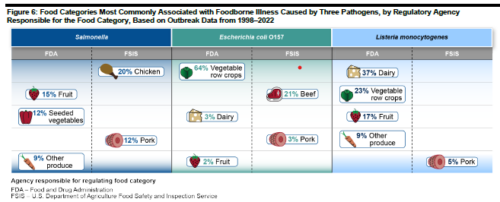Let’s not lose sight of food safety risks
I’m hoping the Making America Healthy Again includes keeping us safe from food pathogens.
Four items relevant to food safety.
I. Food Safety News: Salmonella outbreak sickens over 100; Animal operations blamed for leafy greens risk.
II. And the FDA is investigating yet another outbreak.
Cucumbers grown by Bedner Growers, Inc., and distributed by Fresh Start Produce Sales, Inc., to retailers, distribution centers, wholesalers, and food service distributors from April 29, 2025, to May 19, 2025. Cucumbers distributed before this timeframe should be past shelf life and should no longer be available on the market…FDA has posted a list of additional recalls being conducted by retailers that may have received potentially contaminated recalled cucumbers from Bedner Growers, Inc. This list includes recalls conducted by companies that further processed the cucumbers by using them as ingredients in new products or by repackaging them.
III. The Journal of Food Protection just published this article: An Overview of Farm Investigation Findings Associated with Outbreaks of Shiga Toxin-Producing Escherichia coli Infections Linked to Leafy Greens: 2009 – 2021
These investigations showed that the outbreak strain can be found throughout the lifespan of leafy greens products, from the agriculture water used for the leafy greens, sediment from irrigation reservoirs, manure in nearby land, to retail product.
The contaminants come from animal manure leaching into water and soil. Leafy greens should not be grown near CAFOs (concentrated animal feeding operations).
IV. And what are FDA (plants) and USDA (animals) doing about all this? The budget cuts are unlikely to help.
The Department of Government Efficiency (DOGE) recently laid off approximately 6,000 employees of the United States Department of Agriculture (USDA). Additionally, the Trump administration has proposed almost $40 million in budget cuts to the Food and Drug Administration (FDA) and a $1 billion decrease in the USDA budget, which recently resulted in workforce cuts and the suspension of services such as milk quality tests…The budget cuts and layoffs are partially intended to lessen federal government oversight and to shift many of the responsibilities to the state level. However, some states simply do not have the resources to serve as equally effective replacements.
This could have significant impacts on food safety and quality assurance.
How’s that for an understatement?





